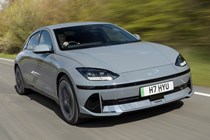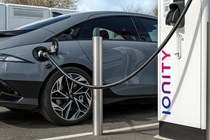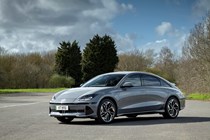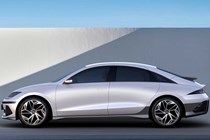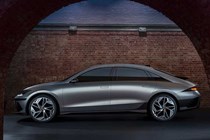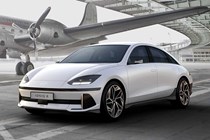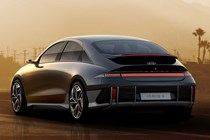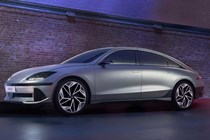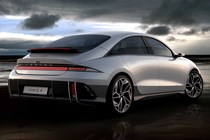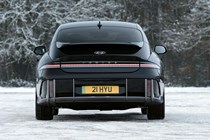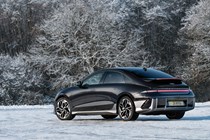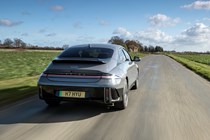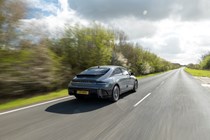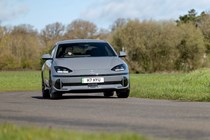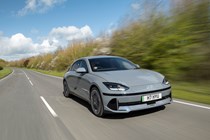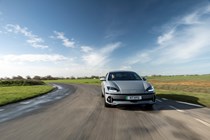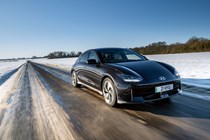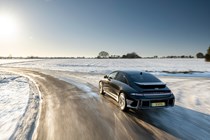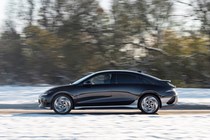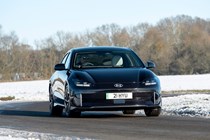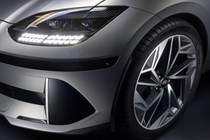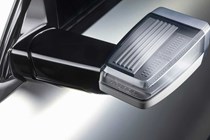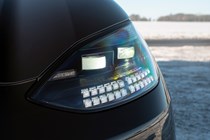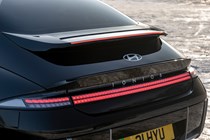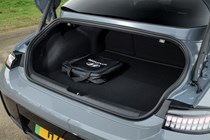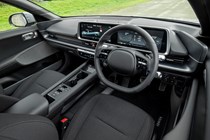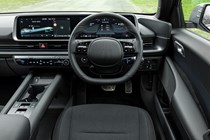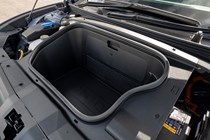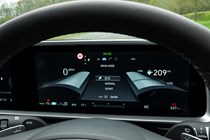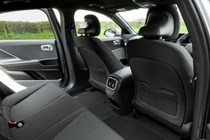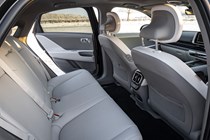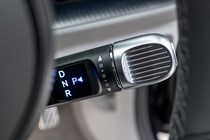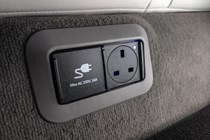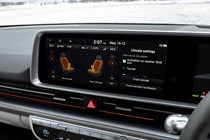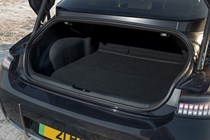
Hyundai Ioniq 6 engines, drive and performance
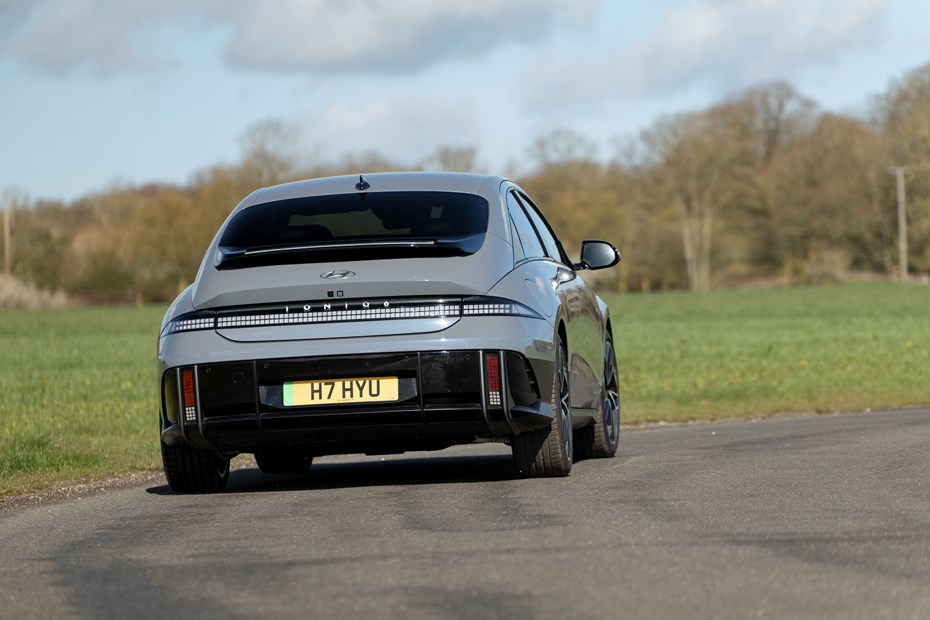
What power options are there?
- Just one battery capacity
- Single- or twin-motor options
- Not Tesla fast but quick enough for most
Powering this car is Hyundai and Kia’s cutting-edge electric car architecture (also found under the Hyundai Ioniq 5, Genesis GV60 and Kia EV6). The South Korean firms’ new EVs all share this technical platform and it means that you can expect an impressively long electric range, a choice of powerful models and plenty of clever touches including a V2L (vehicle-to-load) function which lets you power domestic devices and even your house from your car. There’s even a full three-point plug by the rear bench.
Buyers in other countries can spec a cheaper 58kWh battery pack, but all UK-bound Hyundai Ioniq 6 EVs will come with the larger 77kWh lithium-ion polymer battery. This is good for range, but bad for price.
Choose from single-motor rear-wheel drive models and twin-motor all-wheel drive versions. Base models are adequately brisk (0-62mph takes 7.4 seconds) while adding the extra electric motor turns this head-turning electric car into a rocketship capable of bothering a Porsche, with 0-62mph in just 5.1sec. It feels that fast on the road.
What’s it like to drive?
- Surprisingly agile to drive
- Compliant ride, accurate handling
- Good, but outdriven by Model 3 and i4
The Hyundai Ioniq 6 is a well judged electric car with a more sporting character than its 5 brethren. Its lower saloon bodyshell and lighter kerbweight give it a more agile nature, with a delightful pointiness and willingness to change direction.
Not that this is an overtly sporting saloon. Far from it. We found the Ioniq 6 to be a comfortable four-door and one that soaks up the worst lumps and bumps that are far too common on British roads. There is some fidget over scruffily surfaced roads, but the payoff is tighter body control than an Ioniq 5.
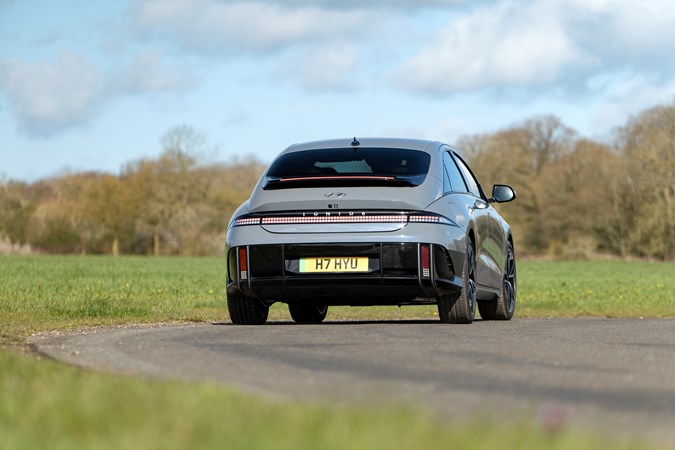
It’s also really quiet. That sleek streamliner style makes for one very aerodynamically smooth bodyshell that cleaves through the air with minimum fuss. We found it very relaxing to drive on motorways.
Performance is impressive. We’ve driven both the two- and all-wheel drive Ioniq 6 models now; even the lesser powered 225hp RWD model is adequately fast with a decent turn of speed, while the 321hp AWD version is properly fast – with pin-you-back-in-your-seat acceleration only a toe-twitch away.
However, it wouldn’t be our top pick for driving enjoyment at this price point. A Tesla Model 3 is even quicker and feels more agile, while a BMW i4 is even more satisfying to drive than both.


